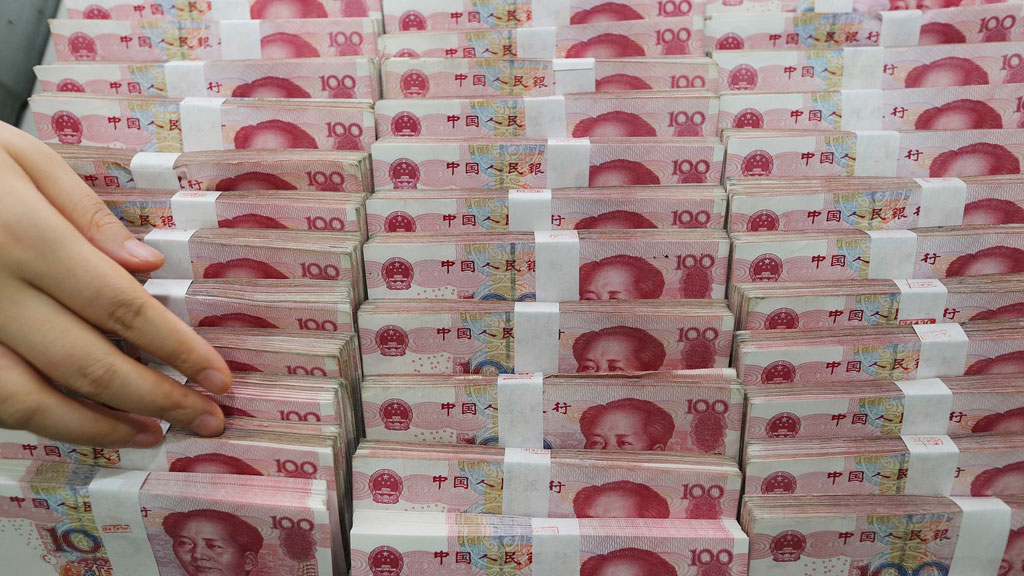 SHANGHAI: China's yuan eased on Friday, pressured by a stronger dollar and trade worries after Beijing pledged to retaliate for the latest U.S. tariffs.
SHANGHAI: China's yuan eased on Friday, pressured by a stronger dollar and trade worries after Beijing pledged to retaliate for the latest U.S. tariffs.
The dollar firmed after upbeat U.S. retail sales data, which helped to ease financial market fears that the economy was heading into recession.
The global dollar index traded at 98.211 as of midday, after hitting a two-week high of 98.249 earlier in the session.
Prior to the market opening on Friday, the People's Bank of China (PBOC) set the midpoint rate at 7.0312 per dollar, weaker than the previous fix of 7.0268.
In the spot market, onshore yuan opened at 7.0375 per dollar and was changing hands at 7.0390 at midday, 57 pips weaker than the previous late session close.
If the onshore spot yuan finishes the late night session at the midday level, it would have gained 0.3 percent to the dollar for the week, after posting two straight weeks of huge losses.
But the yuan has still lost 2 percent of its value against the greenback since U.S. President Donald Trump said early this month that he would slap fresh tariffs on $300 billion of Chinese imports on Sept. 1.
Trump's statement this week that he would delay some of those tariffs until Dec. 15 brought only fleeting relief to markets.
"Hard attitudes" from both the United States and China on the trade negotiations has become a key concern for investors, said a trader at a Chinese bank, noting that the yuan has been very sensitive to developments in trade war, which is dragging into its second year.
China on Thursday vowed to counter the latest U.S. tariffs but called on the United States to meet it halfway on a potential trade deal.
Separately, the European Central Bank's easing expectations has also offered some support for the dollar and pressured the yuan, said a second trader at a Chinese bank.
Euro was down after a Wall Street Journal report showed that ECB's Olli Rehn sees the need for an "impactful and significant" stimulus package at its next meeting in September.
China let the yuan fall through the closely watched 7 per dollar level on Aug. 5, days after Trump's tariff announcement, but has been seen trying to steady it since.
Frances Cheung, head of macro strategy for Asian at Westpac in Singapore, said the yuan was likely to be supported at 7.1 for now.
"With the burden of '7' out of the way, the flexibility for the RMB to move based on market forces and fundamentals has increased," she said in a note.
"We expect USD/CNY to grind towards 7.20 by year end. The prospect for sustained bond inflows represents a supportive factor which helps prevent more rapid RMB depreciation."



















Comments
Comments are closed.